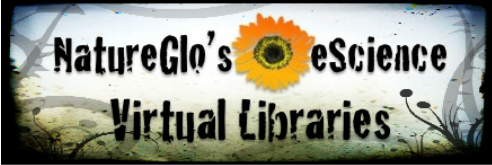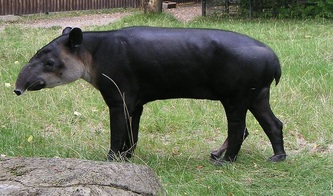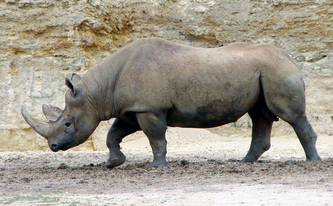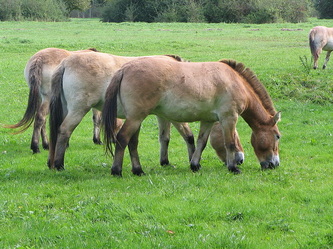The Odd-toed Ungulates: Horses, Tapirs and Rhinos
Web Resources
The Rhino Resource Center
John and Judy Traverse's Imire Safari Ranch
Tapir Specialist Group
The Tapir Gallery
Assateague Island National Seashore - Wild Horses
Corolla Wild Horse Fund (this site has great resources including some history about the re-introduction of the horse to North America by the Spaniards)
San Diego Zoo - Prezwalski's Horse (the Mongolian wild horse)
Zoo Borns - Tapir
The Rhino Resource Center
John and Judy Traverse's Imire Safari Ranch
Tapir Specialist Group
The Tapir Gallery
Assateague Island National Seashore - Wild Horses
Corolla Wild Horse Fund (this site has great resources including some history about the re-introduction of the horse to North America by the Spaniards)
San Diego Zoo - Prezwalski's Horse (the Mongolian wild horse)
Zoo Borns - Tapir
Horses, Tapirs
& Rhinos Lesson #5 Videos
& Rhinos Lesson #5 Videos
Rhinos Lesson #6 Videos
You can view the rest of the documentary, There's a Rhino in My House below under the Informative Videos section.
Projects & Activities
Squidoo - "Equin-etry"- A compendium of horse poetry
Tracing Horses Activity
When I was about 12 years old, I got the "horse bug". I would visit the horse ranch up the street in my small town regularly. I drew and painted horses, wrote stories about horses and I even traced horses. Here's a childhood activity that I would like to share with you. Tracing Horses allows you to really see the details of the horse. You can either do the funky colors and textures mentioned below, or stick to simply tracing the exact details and coloring the horses in their natural colors.
Materials:
Step 1: Look through a book, magazine and or website to find a picture of a horse. Using your photo, tracing paper and a pencil, trace the horse's outline.
Step 2: Experiment with different coloring tools to color the horses. i.e. color one in with crayons and use paint to fill in another one. You can even cut and glue felt, wallpaper or scraps of bark to cover one of the horse outlines. Use as many different mediums to color your pictures as you can. Use your creativity with varieties of colors and textures including mixing and matching textures. Horses can be red and orange, or they can have purple and green stripes.
Step 3: Cut all your new horses out, and glue them into a poster picture on a piece of poster board.
Step 4: Study the outlines and see if you can recall which outlines go with which breeds. Are there distinguishing features that make certain characteristics stand out? Share your board with others. If you take Natureglo's live class, take photographs and or videos of the process to share in a blog with the class.
Squidoo - "Equin-etry"- A compendium of horse poetry
Tracing Horses Activity
When I was about 12 years old, I got the "horse bug". I would visit the horse ranch up the street in my small town regularly. I drew and painted horses, wrote stories about horses and I even traced horses. Here's a childhood activity that I would like to share with you. Tracing Horses allows you to really see the details of the horse. You can either do the funky colors and textures mentioned below, or stick to simply tracing the exact details and coloring the horses in their natural colors.
Materials:
- Book or magazine with horses from the library or links from the internet about horses. Here is a great online resource: HorseChannel.com or the Equinest, featuring all horse breeds. You can print out photos of horses for the exercise.
- Tracing paper
- Pencil
- Coloring media: markers, crayons, colored pencils
- Interesting materials to fill in horses (the sky's the limit of your creativity here; the list can go beyond what's offered): Fabrics such as felt, wallpaper, tissue paper, bark, leaves or whatever you can successfully glue to your poster board.
- scissors
- Craft glue
- Poster board or affix the tracings in your mammals journal
Step 1: Look through a book, magazine and or website to find a picture of a horse. Using your photo, tracing paper and a pencil, trace the horse's outline.
Step 2: Experiment with different coloring tools to color the horses. i.e. color one in with crayons and use paint to fill in another one. You can even cut and glue felt, wallpaper or scraps of bark to cover one of the horse outlines. Use as many different mediums to color your pictures as you can. Use your creativity with varieties of colors and textures including mixing and matching textures. Horses can be red and orange, or they can have purple and green stripes.
Step 3: Cut all your new horses out, and glue them into a poster picture on a piece of poster board.
Step 4: Study the outlines and see if you can recall which outlines go with which breeds. Are there distinguishing features that make certain characteristics stand out? Share your board with others. If you take Natureglo's live class, take photographs and or videos of the process to share in a blog with the class.
Glogsters
Unique Animal reports using a "Glogster" or digital poster (13 and up can sign up as teachers....after all, you are presenters, right? For younger students, homeschool parents could set up an account) Check out these posters about the rhinoceros!
http://jeep56.edu.glogster.com/animal-report-rhinoceros/
Informative Videos
 Courtesy of The Jodhpurs Company
Courtesy of The Jodhpurs Company




